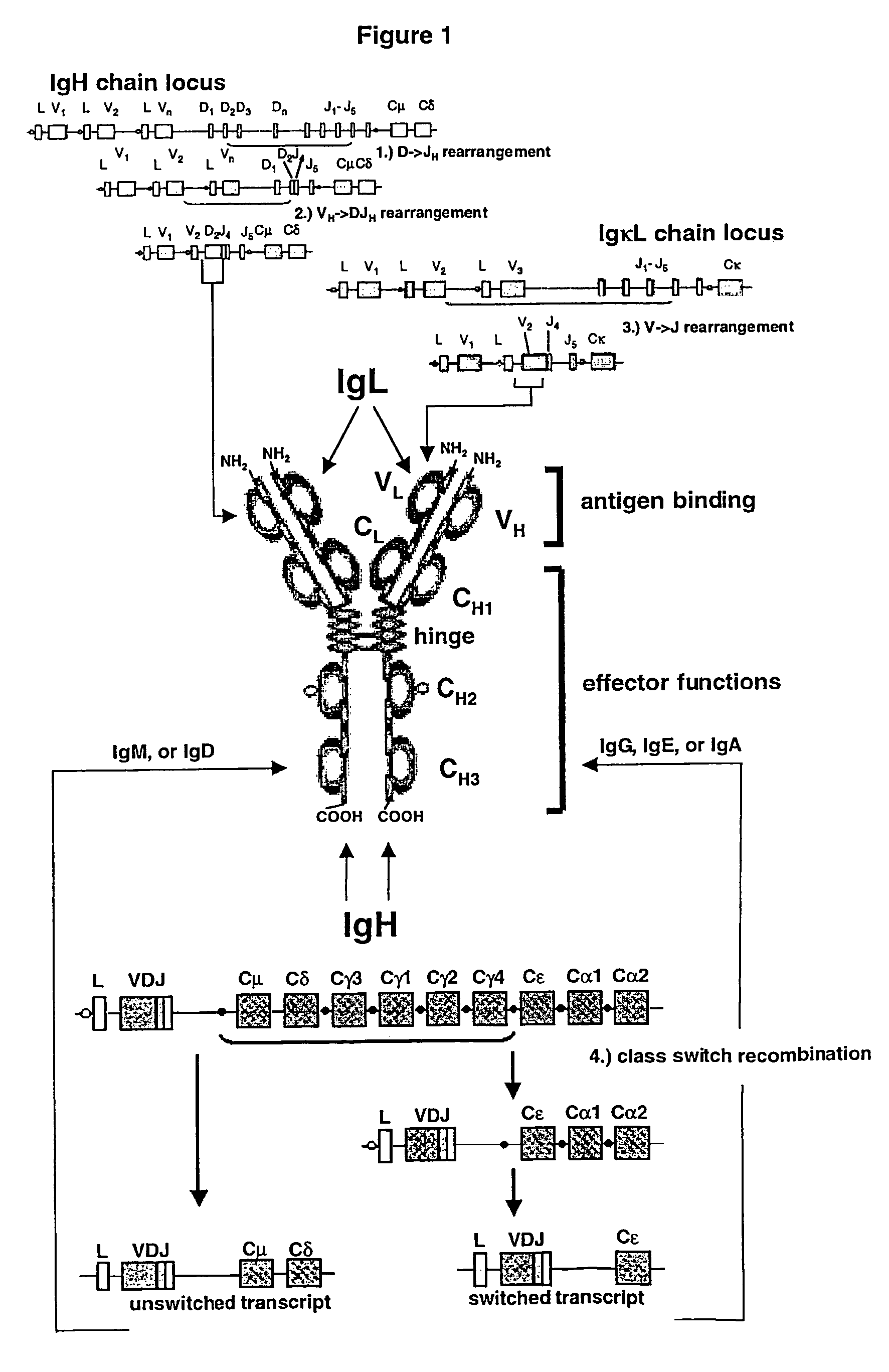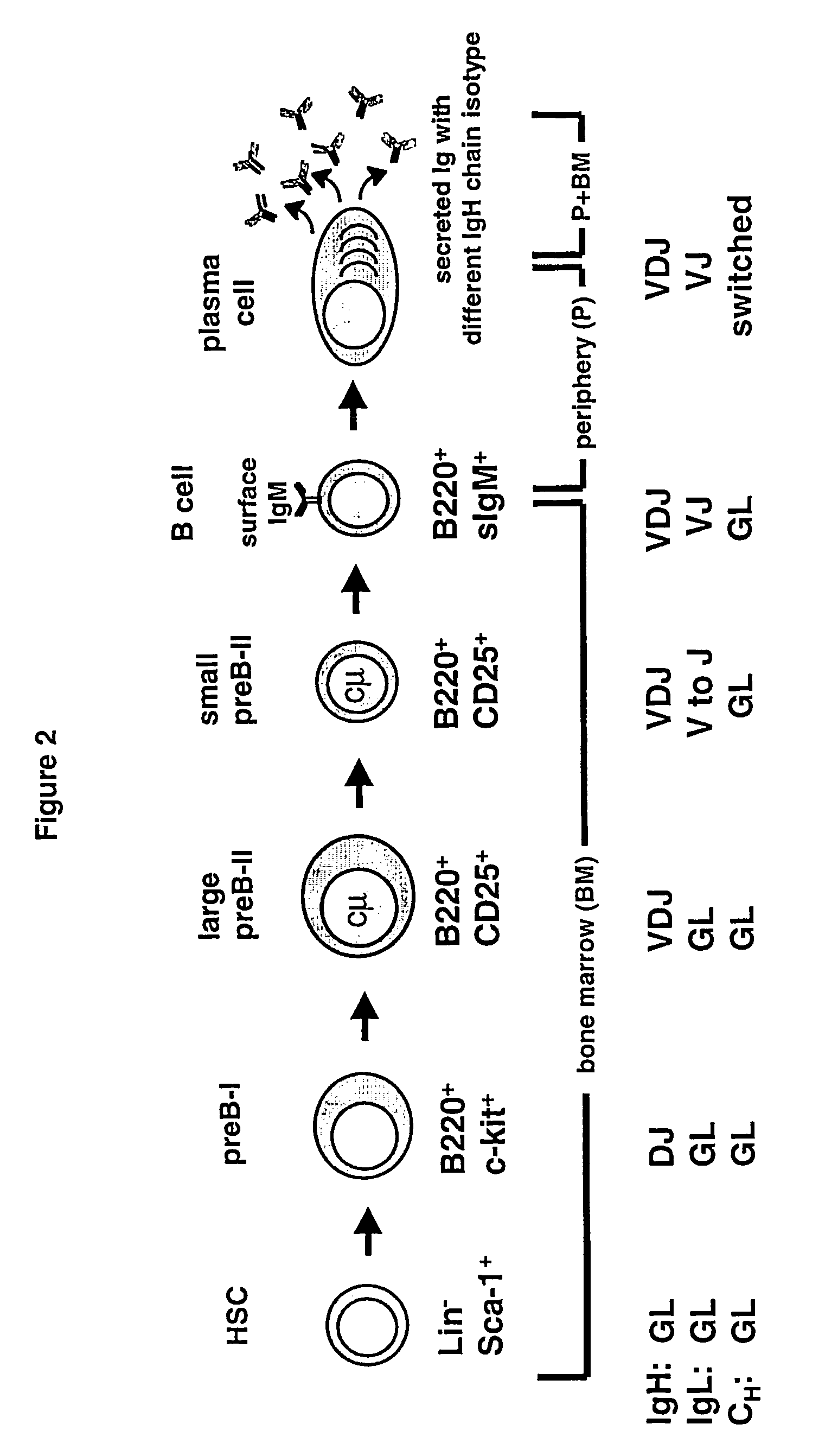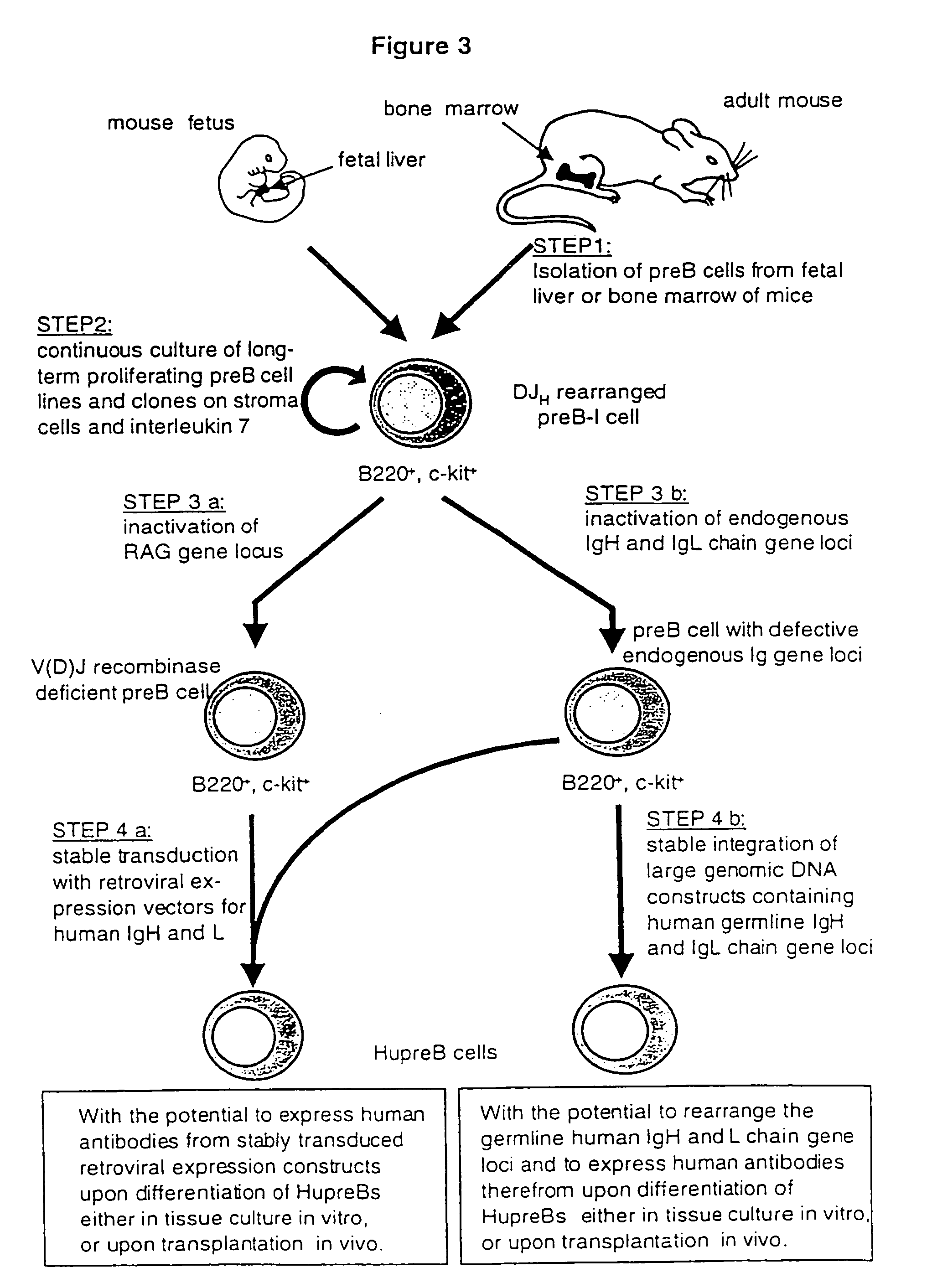Method for the generation of genetically modified vertebrate precursor lymphocytes and use thereof for the production of heterologous binding proteins
a technology of precursor lymphocytes and gene modification, applied in the field of gene engineering and antibody production, can solve the problems of reducing its pharmacological efficacy, impractical for the treatment of diseases affecting larger populations, and inability to immunize humans with a given antigen for the purpose of monoclonal antibody production
- Summary
- Abstract
- Description
- Claims
- Application Information
AI Technical Summary
Benefits of technology
Problems solved by technology
Method used
Image
Examples
example 1
Establishment of Long-Term Proliferating, Murine Precursor B Cells with the Potential to Differentiate into Mature B Lineage Cells
[0195]Stromal cell and IL7 responsive murine precursor B cells are found in fetal liver of mouse fetuses at day 15-18 post-coitum, in the bone marrow of adult mice, as well as in the spleen of newborn animals (Blood, 81, 2290-2300, 1993). In order to isolate these preB cells, mice are sacrificed by CO2 suffocation and the respective organs are removed under sterile conditions. Total bone marrow cells are obtained by removing femur and tibia, opening of the bones at both ends with sterile scissors and flushing the marrow with 2-5 ml phosphate buffered saline (PBS) using a 5 ml disposable syringe and a 25 or 26 gauge needle. Isolated spleen or fetal liver also prepared under sterile conditions is placed onto a sterile 200 mesh steel grid in a petri dish with 5-10 ml of PBS. The organs are cut into pieces and gently squashed through the metal grid with the p...
example 2
Stepwise Differentiation of Murine Precursor B Cells into Antibody Secreting Plasma Cells In Vitro
[0204]Long-term proliferating, stromal cell and IL7 dependent murine preB cells retain their potential to differentiate into more mature B lineage cells (Rolink et al., s.a.), which can be achieved in vitro. This differentiation can be performed in two steps by first inducing differentiation to cells with an immature B cell phenotype and, second, by inducing differentiation to cells with a phenotype of antibody secreting plasma cells.
[0205]The first differentiation stage is reached by removing IL7 from the preB cells in the continued presence of stromal cells. For this preB cells are harvested from proliferating cultures, washed three times with serum free preB cell culture medium lacking IL7 and plated at a density of 1-2×106 cells / ml onto fresh, 3000rad γ-irradiated stromal cells in the absence of IL7. Within a period of three days the preB cell cease to proliferate and differentiate ...
example 3
Cloning of a Retroviral Expression Construct for Murine Bcl2 Overexpression
[0208]A prerequisite for the stable transduction of genes into long-term proliferating, stromal cell and IL7 dependent murine preB cells is the construction of a recombinant retroviral transfer vector containing an expression cassette for a gene of interest. Retroviral transfer vectors consist of retroviral 5′ and 3′ long terminal repeat (LTR) sequences flanking a retroviral packaging signal, Psi(+), a multiple cloning site (MCS) into which heterologous sequences can be inserted, and bacterial plasmid control elements required for replication and maintenance of the vector in E. coli. An example for an empty retroviral transfer vector is the commercially available plasmid pLIB (Clontech) (FIG. 11a).
[0209]In order to construct a retroviral expression vector containing the anti-apoptotic gene bcl-2, a strategy for coexpression of the murine bcl-2 cDNA and the hygromycinB drug selection marker is applied by linki...
PUM
| Property | Measurement | Unit |
|---|---|---|
| volume | aaaaa | aaaaa |
| density | aaaaa | aaaaa |
| density | aaaaa | aaaaa |
Abstract
Description
Claims
Application Information
 Login to View More
Login to View More - R&D
- Intellectual Property
- Life Sciences
- Materials
- Tech Scout
- Unparalleled Data Quality
- Higher Quality Content
- 60% Fewer Hallucinations
Browse by: Latest US Patents, China's latest patents, Technical Efficacy Thesaurus, Application Domain, Technology Topic, Popular Technical Reports.
© 2025 PatSnap. All rights reserved.Legal|Privacy policy|Modern Slavery Act Transparency Statement|Sitemap|About US| Contact US: help@patsnap.com



